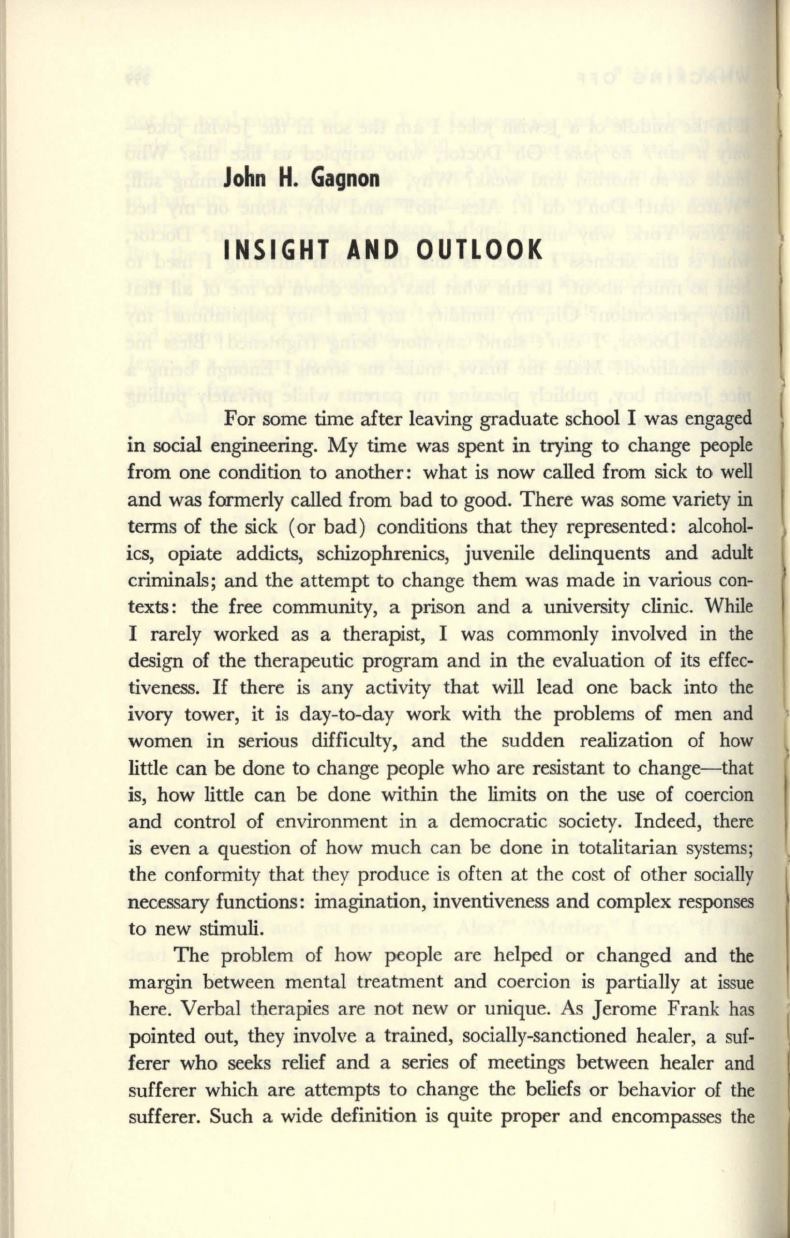
John H. Gagnon
INSIGHT AND OUTLOOK
For some time after leaving graduate school I was engaged
in social engineering. My time was spent in trying to change people
from one condition to another: what is now called from sick to well
and was formerly called from bad to good. There was some variety
in
terms of the sick (or bad) conditions that they represented: alcohol–
ics, opiate addicts, schizophrenics, juvenile delinquents and adult
criminals; and the attempt to change them was made in various con–
texts: the free community, a prison and a university clinic. While
I rarely worked as a therapist, I was commonly involved in the
design of the therapeutic program and in the evaluation of its effec–
tiveness.
If
there is any activity that will lead one back into the
ivory tower, it is day-to-day work with the problems of men and
women in serious difficulty, and the sudden realization of how
little can be done to change people who are resistant to change-that
is, how little can be done within the limits on the use of coercion
and control of environment in a democratic society. Indeed, there
is
even a question of how much can be done in totalitarian systems;
the conformity that they produce is often at the cost of other socially
necessary functions: imagination, inventiveness and complex responses
to new stimuli.
The problem of how people are helped or changed and the
margin between mental treatment and coercion is partially at issue
here. Verbal therapies are not new or unique.
As
Jerome Frank has
pointed out, they involve a trained, socially-sanctioned healer, a suf–
ferer who seeks relief and a series of meetings between healer and
sufferer which are attempts to change the beliefs or behavior of the
sufferer. Such a wide definition is quite proper and encompasses the


